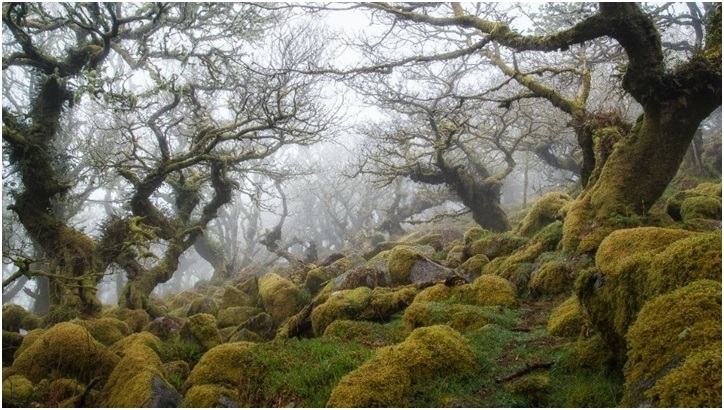The Great Dying Event Of The Permian Epoch: A Message For The Present From The Distant Geologic Past
Total Views |

It's common knowledge that trees absorb carbon dioxide and help sustain
life on Earth, but their profound influence on stabilising the planet's climate
runs far deeper than most imagine. A recent research revealed that forests have
been quietly offsetting ancient carbon stored in terrestrial landscapes that
leak into the atmosphere via rivers. However, it’s the fate of tropical
rainforests that now draws urgent attention. A study of the Permian-Triassic
extinction, dubbed the "Great Dying," shows that the collapse of
ancient forests triggered a global hothouse effect, which lasted millions of
years.
This discovery serves as a reminder from the past and underscores how
losing modern tropical forests could profoundly destabilise climate systems far
into the future, highlighting their indispensable role as planetary climate
guardians.
The Permian Period was the final period of the Palaeozoic Era, lasting
from about 298.9 to 251.9 million years ago. It followed the Carboniferous
Period and preceded the Triassic Period, marking the beginning of the Mesozoic
Era. Noted for the formation of the supercontinent Pangaea, the Permian to
Early Triassic (252-247 million years ago) was a time of significant climatic
shifts that caused global environmental stress, culminating in the severest of
the five extinction events in Earth's geological history, known as the
"Great Dying".
The massive volcanic eruptions in Siberia and the emission of carbon
during that period have played a crucial role in triggering the extinction
event. The source of the Siberian Traps basalt is believed to be a mantle plume
at the base of the crust, which erupted through the Siberian craton. The
Permian-Triassic mega greenhouse condition resulted in the loss of more than 80
per cent of marine and terrestrial life.
During volcanic eruptions, vast amounts of greenhouse gases, including
water vapour, carbon dioxide, and sulphur dioxide, are released. Although
sulphur dioxide is not a greenhouse gas, it can cause acid rain and air
pollution, and it reacts with atmospheric components to produce aerosols that
scatter radiation, thereby trapping heat.
Volcanoes also release thermogenic
gases generated when magma intrudes into sedimentary rocks, releasing trapped
gases like methane, a significant greenhouse gas.
The massive disruption to the carbon cycles, high air and sea
temperatures, and an acidic ocean signal rapid additions of greenhouse gases to
the atmosphere. But the question that puzzled researchers was why the global
hot-house conditions persisted for more than 5 million years.
Why Recovery Took So Long
The increased global silicate weathering would have been expected to
bring CO2 levels back to pre-volcanism levels within approximately 100,000
years.
This occurs through a chemical process where rainwater, slightly acidic
from dissolved CO2, reacts with silicate rocks, transforming them into stable
carbonate minerals—an efficient natural way of carbon sequestration, and
stabilising the global climate. Therefore, the prolonged recovery period for
oceanic and terrestrial ecosystems to return to their original states remained
an intriguing unanswered question.
In a paper—Early Triassic super-greenhouse climate driven by vegetation
collapse—published in Nature Communications, a group of researchers from the
China University of Geosciences, Wuhan, and Leeds University in the United
Kingdom have shed more light on this extended period of extinction. The classic
rock sections displaying biotic evidence of the Permian-Triassic (P-Tr)
boundary in Southwest China (eastern Yunnan and western Guizhou) are key areas
providing insights into the extinction event on land.
The team conducted
extensive field studies at sites in China that exposed Permian rock outcrops
containing fossil records, and they were able to reconstruct maps of changes in
plant productivity during the Permian-Triassic boundary.
They conclude that the collapse of the tropical forest during that period
triggered a climate tipping point. Their findings demonstrated that reduced
vegetation decreased the Earth’s capacity for carbon sequestration, thus
extending the duration of high carbon dioxide levels. Using an extensive
archive of fossils, they reconstructed the distribution maps of plants and
trees before, after, and during that time across various regions of the world.
The data from these studies confirmed that vegetation took a longer time to
establish, thereby lowering the Earth’s ability to absorb carbon from the
atmosphere. This explains why the Permian-Triassic extinction event lasted for
5 million years, longer than the usually expected period needed for recovery.
Carbon Levels: Then vs Now

